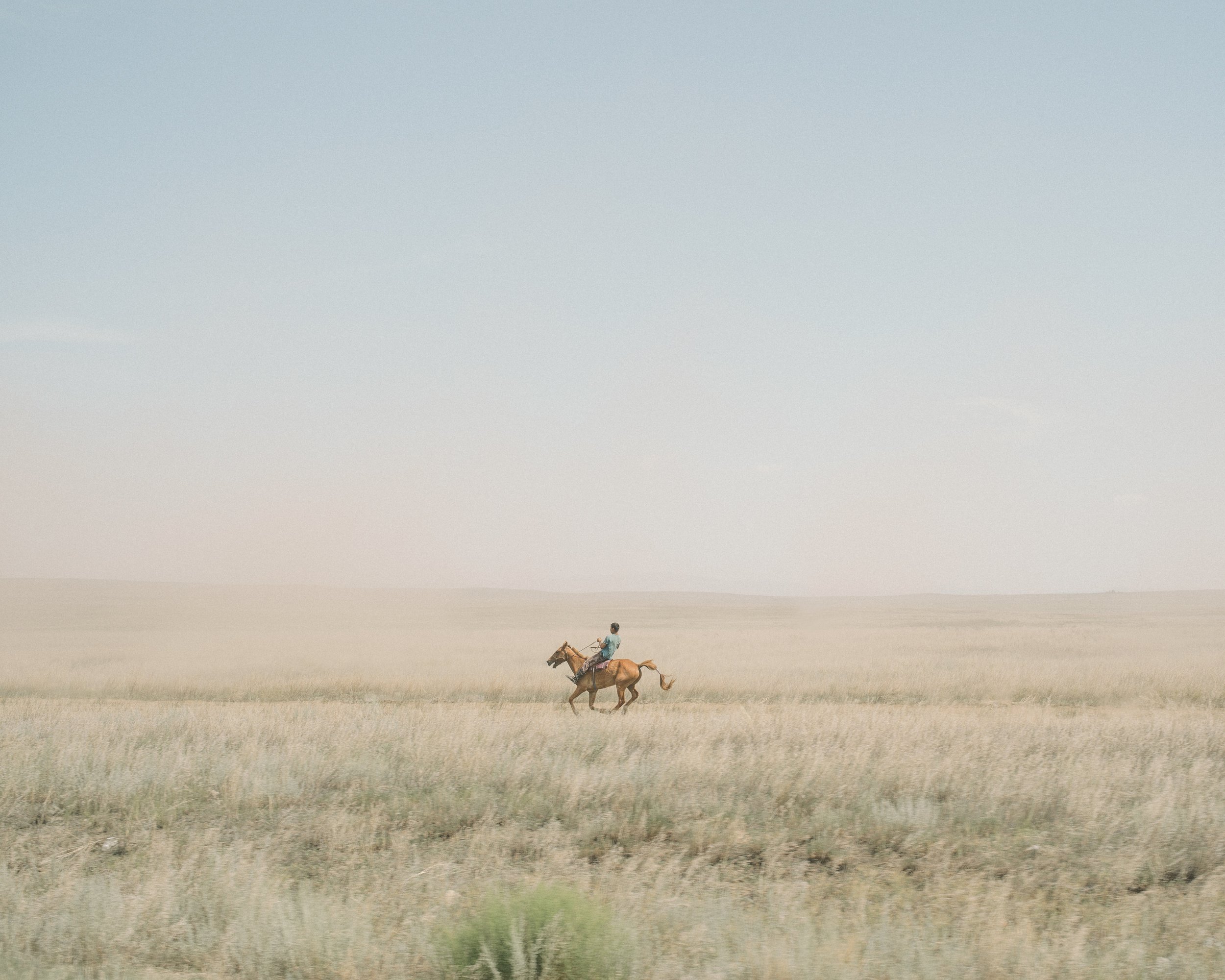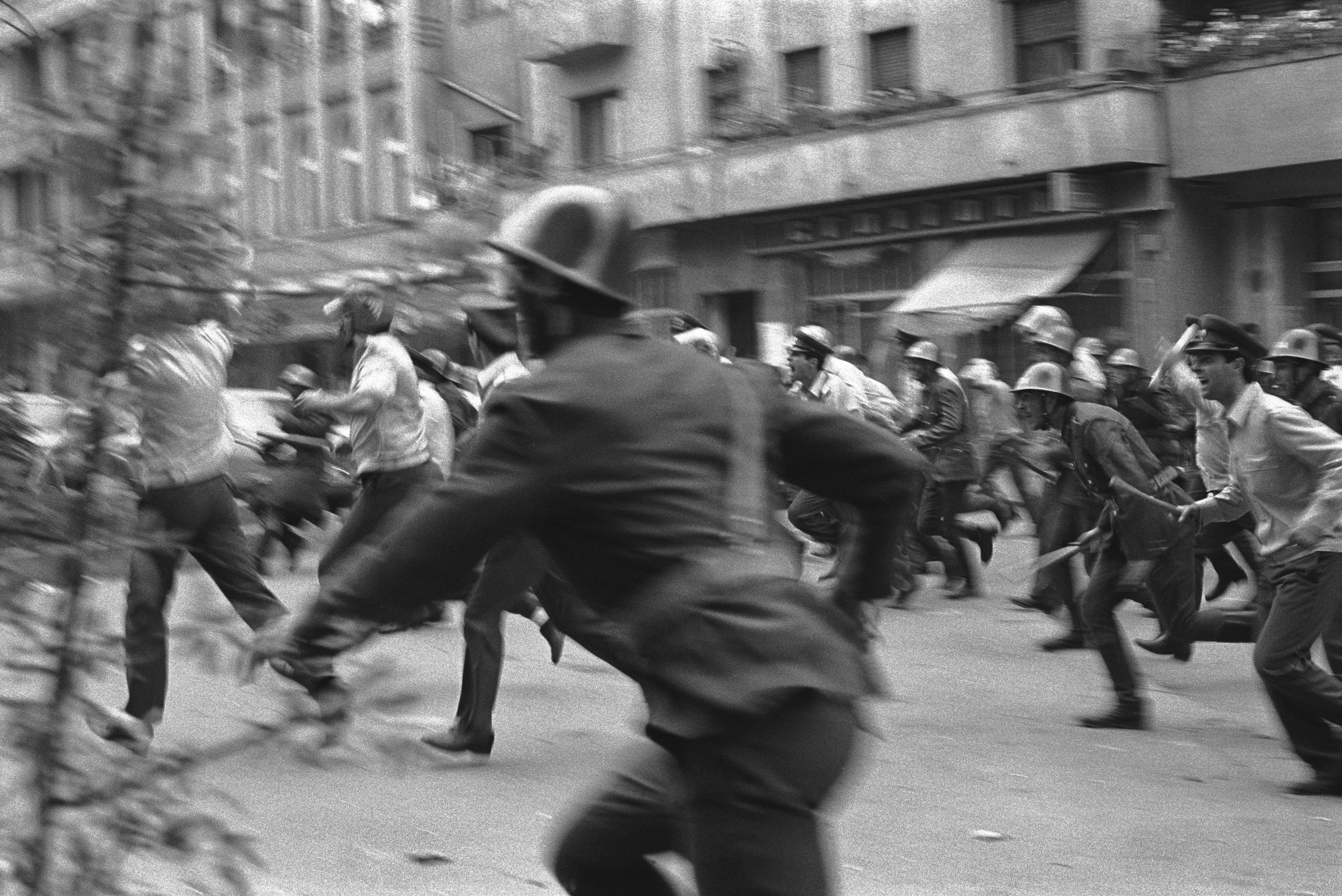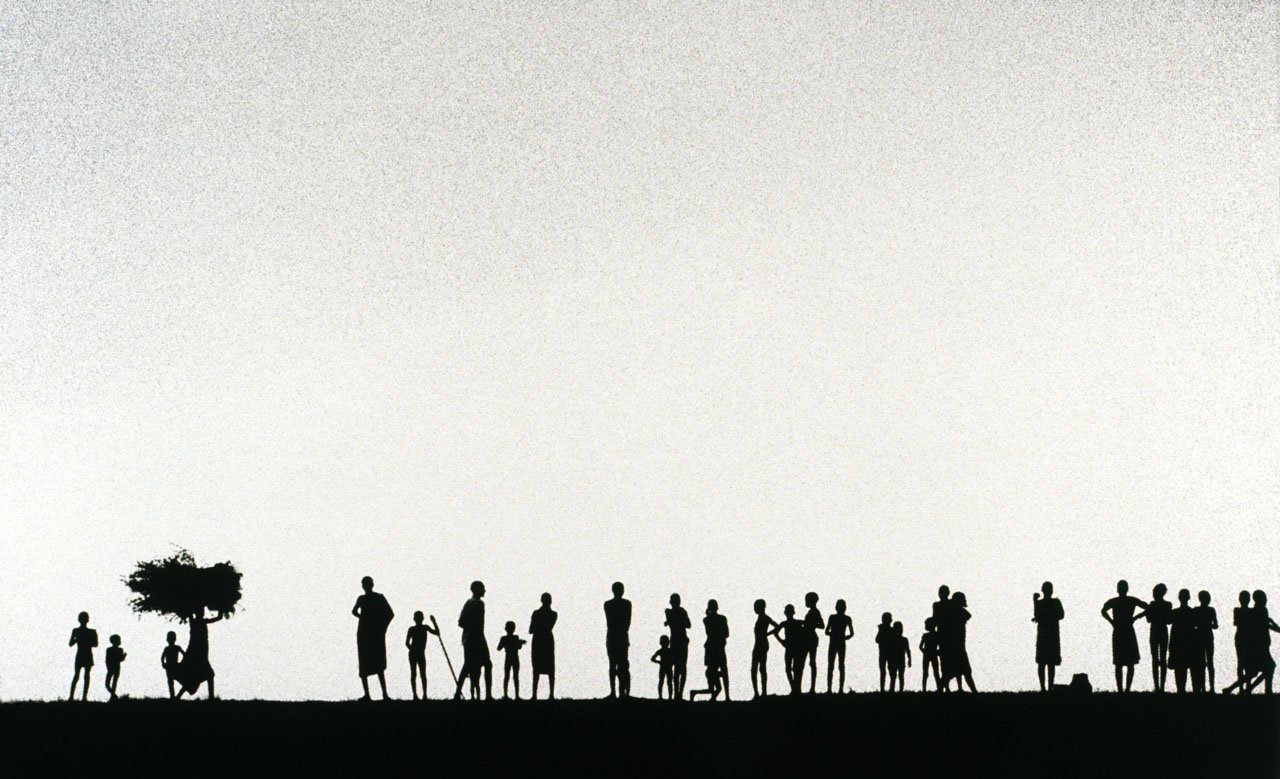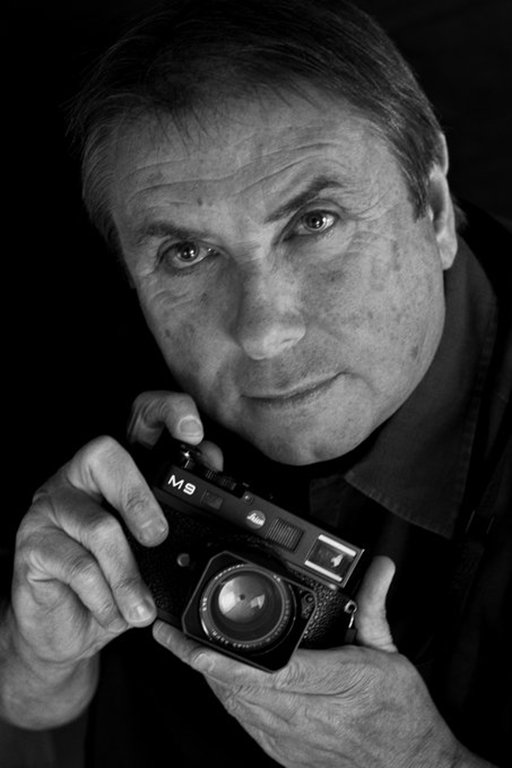
© Nanna Heitmann
The Grant
Ian Parry was a photojournalist who died while on assignment for The Sunday Times during the Romanian revolution in 1989. He was just 24 years of age.
Aidan Sullivan (then Sunday Times picture editor) was determined to build something positive from such a tragic loss and along with Ian’s family and friends created the Ian Parry Photojournalism Grant. Each year we hold an international photographic competition for young photographers who are 24 or under, or undertaking a full-time photographic course.
One recipient will receive The Ian Parry Photojournalism Grant with The Tom Stoddart Award for Excellence being awarded at the judges’ discretion.
The entry criteria for both is the same and the judges will make their decisions based on the individual merits of the entries. Entrants must submit a portfolio and a clear proposal of a project they would undertake if they won the scholarship.
About
The Judging Process
The Judges will be looking for a photographer and project that seem most likely to use exemplary and compelling photojournalism and documentary photography to address an important issue and/or impact related to the human condition: social change, humanitarian concern, armed conflict, or other topics of interpersonal, psychological, cultural, social, environmental, scientific, medical and/or political significance, ideally expressing an underlying acknowledgement of our common humanity.
Previous judges have included: Fiona Rogers, Sir Don McCullin, Lynsey Addario, Mark Sealy, Rahaab Allana, Elisabeth Biondi, Jon Levy, Carol Allen-Storey, Jon Jones, Harriet Logan, Aidan Sullivan, Simon Blakey, Marcus Bleasdale, Zelda Cheatle, Steve Blogg, Jessica Dimson, Charles Parry, John Parry, MaryAnne Golon, Ron Haviv, Elizabeth Krist, Olivier Laurent, Sarah Leen, Russ O’Connell, Meaghan Looram, John Moore, Sandra Stevenson, Brent Stirton, Scott Thode, Ray Wells, Simon Roberts, Kalpesh Lathigra, and Sebah Chaudhry.
Our panel of leading industry experts will remotely review all entries that meet the criteria. They will then select their top 10 potential recipients. Once selected the judges will then meet on line or in person to select a list of ten finalists.
Those finalists will then be contacted and may be asked for further information and a contact who can act as a gurantor.
The judges will then meet again and select the final recipients from those finalists who have met the criteria.
Requirements
Entrants must be no older than 24 years of age or enrolled in a full-time photographic course at the time of entry.
Entrants will need to provide:
1 project per submission
A portfolio of 12 images
Image spec - 300dpi RGB jpgs
2500px minimum on the long edge
Project title, description, captions
Project proposal for grant funds
Proof of age and/or proof of educational course
All entrants must attest and certify that they are the sole creators of any images they are entering and that said images have not been copied or digitally manipulated in any way.
All finalists must, when asked, provide a contact who will act as a guarantor and can verify that the work has been created by the finalist. This can be a tutor, a professional photographer or agency.
Failure to do so may disqualify the entrant.
Recipient
receives
The Ian Parry Photojournalism Grant
(Sponsored by Canon)
Each year the recipient receives:
- £10,000 towards their chosen project (Paid in 2 installments)
- Loan of equipment for 1 year for the IP grant recipient to complete their proposed project
- Eligible for inclusion on the Canon Student Development Programme and eligible for inclusion in the Hamburg Portfolio Review
- Guidance and mentorship during the recipient’s assignment by the founder and CEO of Legacy of War Foundation, renowned photojournalist Giles Duley
- Your work reviewed by leading industry experts
- A year-long personal Mentorship with a renowned photojournalist
The honorary £10,000 Tom Stoddart Award for Excellence may also be given yearly at the judges’ discretion.
One recipient will also receive the Gentex Corp Personal Safety Award dedicated to ensuring the protection of an aspiring photojournalist in the field.
The recipient will receive cutting-edge personal safety equipment, including the Ops-Core FAST SF High Cut Helmet—widely used by special forces—and high-grade body armor. Additionally, the grant will provide comprehensive Hostile Environment Training through an intensive 4-day course in the UK, with all travel and expenses fully covered.
In addition, Save the Children will select one of the IPPG’s long-listed recipients to undertake a professional photography commission for STC.
— The photographer will be paid a full fee, plus travel and expenses for their work.
— They will also benefit from mentoring from the Head of Creative Content & Photography Lead STC.
— The resulting images may be pitched to media outlets or exhibited.
Lastly, each year a selection of entrants will have their work spotlighted via the IPPG channels.
Timeline
Call for entries open — 01 / 05 / 2024
Judges Announced — 01 / 08 / 2024
Call for entries closes — 31 / 08 / 2024
Judging by industry panel — Sept 2024
Mentor Announced — 30 / 09 / 2024
Recipient Announced — 30 / 10 / 2024
Recipient Exhibition — May 2025
Are you 24 or under, or enrolled in a full time photographic course?
Entries are now closed for the 2024 Ian Parry Photojournalism Grant
Remembering Tom Stoddart
Photojournalist
A humble man,
an extraordinary talent
Tom Stoddart (1953-2021) was a long time friend and supporter of the Ian Parry Photojournalism Grant. He sat on the board of trustees and mentored many young recipients. Tom was an exceptional photojournalist and inspired countless young photographers in the field, he gave his time and his humour unconditionally. He is deeply missed.
After his death in November 2021, we initiated the Tom Stoddart Award for Excellence in his memory which will be given on a yearly basis at the judges discretion.
‘The scholarship exists to find and support the very best young people striving to produce powerful, meaningful photojournalism in a ‘selfie’ obsessed world. Ian would be immensely proud of the long list of internationally known photographers who were helped at the start of their careers by the scholarship that bears his name.’
Tom Stoddart
‘When I flew to Bucharest to bring Ian home, Tom was at my side. He has been at my side for some 45 years as a dear friend and a constant inspiration. He was quite simply a wonderful man, generous and kind, never asking for anything, always giving.
We have lost a great photographer and dear friend, but I know he will want us to carry on supporting young aspiring photojournalists and would be very proud of what the Grant has achieved.’
Aidan Sullivan, Founder and Chairman of The Ian Parry Photojournalism Grant
FAQs
How much does it cost to submit? Nothing. Each year it is free to enter the Ian Parry Photojournalism Grant.
Do I need a project proposal?
Your submission won’t be accepted without a project proposal, you must attach a proposal.
Am I eligible to apply for the Ian Parry Photojournalism Grant?
If you turned 25 years of age (or younger) within the year you are entering, regardless of educational status, you are eligible to apply to the Open Call. If you are 25 years of age or above, you must be enrolled in a full-time photographic course in order to be eligible to apply.
Do you accept international submissions?
Yes, absolutely. We welcome entries from all countries and there are no geographical limits on submissions.
Does my portfolio have to be my proposed project for the prize money?
No. Your portfolio is an example of previous work, the prize money must be used towards making new work or progressing an existing project.
Can my subjects be staged or digitally manipulated?
We do not accept photographic work that has been staged or digitally manipulated.
How many photographs can I enter into the same series?
You can enter up to 12 images from the same series.
What specs should the digital files be?
Images must be at least 15MB in size (uncompressed) and use sRGB/Adobe RGB (1998) colour model and profile. All images must be submitted as high-resolution files suitable for printing as winning images will be reproduced, including in print format.
Is there a time limit within which the photographs should have been taken?
No, your series can be from any year.
What is an extended caption?
An extended caption is a description of the photograph (1-3 sentences) including the basic information of what, where, when and who?
When will I know if my photographs have been shortlisted?
We will only contact shortlisted and winning photographers after the judging period has ended.
How is the grant payment made?
The Grant of £10,000 will be paid in two equal installments of £5,000, the first to be paid on the announcement of the grant and the second to be paid following a six-month review of the progress of the project.
‘ENTER! This is the single most important photography award for young photojournalists. It transformed my career and many other photographers. Just look at the list of people who have been awarded the Ian Parry. It is incredible what they have all gone on to achieve in Ian’s memory.’
Marcus Bleasdale, 2000 Recipient

© Jeremy Sutton-Hibbert
‘The IP Photojournalism Grant allowed me to pursue projects and stories that I was passionate about but may not have had the resources to do so otherwise. Thanks to their support, I was able to travel to different locations, meet fascinating people, and capture meaningful images that I hope will make a difference in the world. Overall, the Ian Parry was a life-changing opportunity that not only gave me valuable skills and experiences but also opened doors for my career and allowed me to pursue my dreams as a photographer. If Pulitzer is an Oscar in photography, The Ian Parry is surely a Golden Globe.’
Sharafat Ali, 2017 Recipient

© Harriet Logan
For three decades we have supported young and emerging photographers. You can help keep the Ian Parry Photojournalism Grant free to enter by making a donation today. Thank you.
General entry rules
The Ian Parry Photojournalism Grant contest is open to young photographers up to and including the age of 24 or enrolled on a recognized full-time photographic course.
Every entrant may need to provide a document that confirms their date of birth and proof of the educational course they are attending.
The photographer must be the author of the photographs submitted in their name.
All entries must have accurate captions and descriptions, written in English or translated using Google Translate or similar software.
Each entry must include a detailed description (up to 1000 words) of the assignment you would like to undertake if a recipient of the grant and also a short summary of the project (up to 100 words)
All entries must comply with the code of ethics.
Read the code of ethics in detail below.
Entries can only be submitted via Picter, the official contest entry platform.
Terms and conditions
Copyright holders retain copyright of their work. For awarded entries and honorable mentions, copyright holders grant The Ian Parry Photojournalism Grant the unlimited non-exclusive use of high-resolution photographs for activities in all media, including social media, online and print, in relation to the contest, the exhibition, and all promotional and educational activities for and under the auspices of the The Ian Parry Photojournalism Grant, without any remuneration being due.
The copyright holders represent and warrant that submission of the entries does not breach any law, and further that no third party can hold any claims or any objections regarding the rights granted to the The Ian Parry Photojournalism Grant. The copyright holders will hold the The Ian Parry Photojournalism Grant harmless of any claims from third parties related hereto.
The Entry Rules and any dispute, proceedings or claim of whatever nature arising out of or in any way relating to the Entry Rules (including any non-contractual disputes or claims), shall be governed by U.K. law.
By winning the Ian Parry Photojournalism Grant, the recipients agree to give permission for a print to be made and given as part of the IPPG Guardian Angel and Patron scheme.
The Grant of £10,000 will be paid in two equal installments of £5,000, the first to be paid on the announcement of the grant and the second to be paid following a six-month review of the progress of the project.
The conditions set out in the Entry Rules are binding, and The Ian Parry Photojournalism Grant reserves the right to refuse or exclude any entry at its own discretion.
Code of Ethics
Entrants to The Ian Parry Photojournalism Grant must ensure that all entered material has been created ethically and provides a fair representation of the stories and people photographed. Entrants must comply with the following code of ethics:
Must be aware of the influence the photographer’s presence can have on a scene they photograph.
Must not intend to mislead by recreating or staging events. In certain cases, deliberate reenactments can be acceptable if they serve a clear purpose for the story and/or issue being documented, and the photographer must be transparent about their motivation and process. Any direct influence over the scene, such as reenactments or posed portraits, must be included in the captions.
Must ensure that individuals and/or groups photographed are treated with dignity and respect, and that the photographer causes no physical and/or psychological harm.
Must ensure that consent has been appropriately handled, with consideration for relevant local and international laws and for the ability of an individual to give informed consent, for example when working with vulnerable people and children. Consider whether individuals and/or groups are adequately informed about the potential use and distribution of photographs via the contest, and what impact that could have on them. Information about consent should be indicated in the caption.
Consider whether measures need to be taken to protect identity especially when photographing vulnerable individuals and/or groups and children–either when photographing or in the caption.
Must ensure that independence is upheld and must not pay individuals and/or groups for information or participation, or accept any form of compensation – such as gifts, money or favors–from those who may seek to influence the story.
Must ensure that the personal safety of everyone involved – including the photographer, fixers and individuals and/or groups photographed – is appropriately handled. Avoid taking unnecessary risks that can result in dangerous situations.
Respect the work of other photographers and do not plagiarize. Consider whether work repeats well-known examples or is distinctive.
Must ensure that the content and edit of photographs and stories present an accurate and comprehensive representation of individuals and/or groups. Consider whether graphic and violent photographs are appropriate for the story presented, especially when they involve vulnerable people.
Avoid reinforcing stereotypes and be aware of biases that can result in misrepresentation.
Ensure captions, and any other textual elements, are accurate.
Must be open and transparent about the entire process through which their photographs are made, and are accountable to the Ian Parry Photojournalism Grant for their practice.
Ian Parry Photojournalism Grant code of ethics is in line with journalistic and documentary practices and standards. The organization reserves the right to seek clarification or explanation should concerns arise during or after the judging process.

